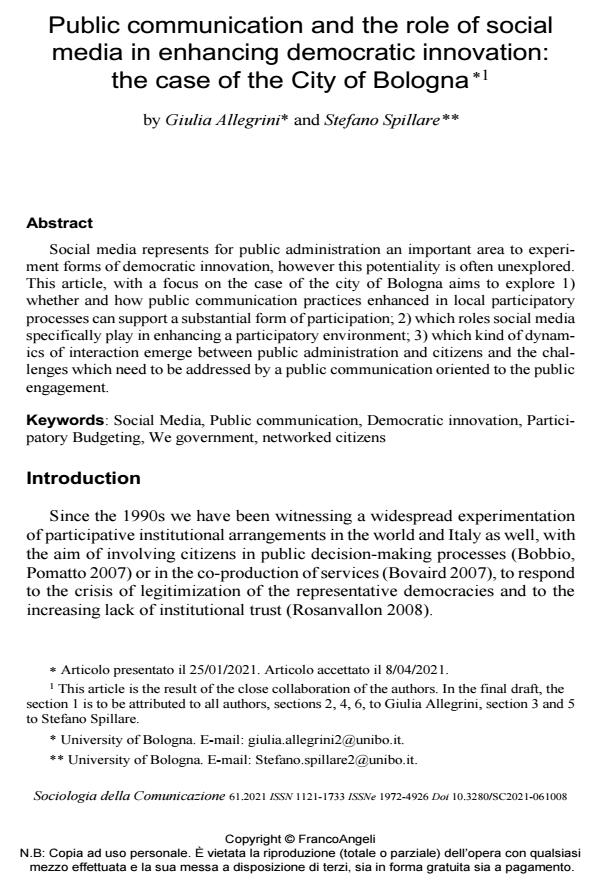Public communication and the role of social media in enhancing democratic innovation: the case of the City of Bologna
Titolo Rivista SOCIOLOGIA DELLA COMUNICAZIONE
Autori/Curatori Giulia Allegrini, Stefano Spillare
Anno di pubblicazione 2021 Fascicolo 2021/61
Lingua Inglese Numero pagine 18 P. 109-126 Dimensione file 419 KB
DOI 10.3280/SC2021-061008
Il DOI è il codice a barre della proprietà intellettuale: per saperne di più
clicca qui
Qui sotto puoi vedere in anteprima la prima pagina di questo articolo.
Se questo articolo ti interessa, lo puoi acquistare (e scaricare in formato pdf) seguendo le facili indicazioni per acquistare il download credit. Acquista Download Credits per scaricare questo Articolo in formato PDF

FrancoAngeli è membro della Publishers International Linking Association, Inc (PILA)associazione indipendente e non profit per facilitare (attraverso i servizi tecnologici implementati da CrossRef.org) l’accesso degli studiosi ai contenuti digitali nelle pubblicazioni professionali e scientifiche
Social media represents for public administration an important area to experi-ment forms of democratic innovation, however this potentiality is often unex-plored. This article, with a focus on the case of the city of Bologna aims to explore 1) whether and how public communication practices enhanced in local participa-tory processes can support a substantial form of participation; 2) which roles so-cial media specifically play in enhancing a participatory environment; 3) which kind of dynamics of interaction emerge between public administration and citizens and the challenges which need to be addressed by a public communication orient-ed to the public engagement.
Parole chiave:Social Media, Public communication, Democratic innovation, Partici-patory Budgeting, We government, networked citizens
Giulia Allegrini, Stefano Spillare, Public communication and the role of social media in enhancing democratic innovation: the case of the City of Bologna in "SOCIOLOGIA DELLA COMUNICAZIONE " 61/2021, pp 109-126, DOI: 10.3280/SC2021-061008